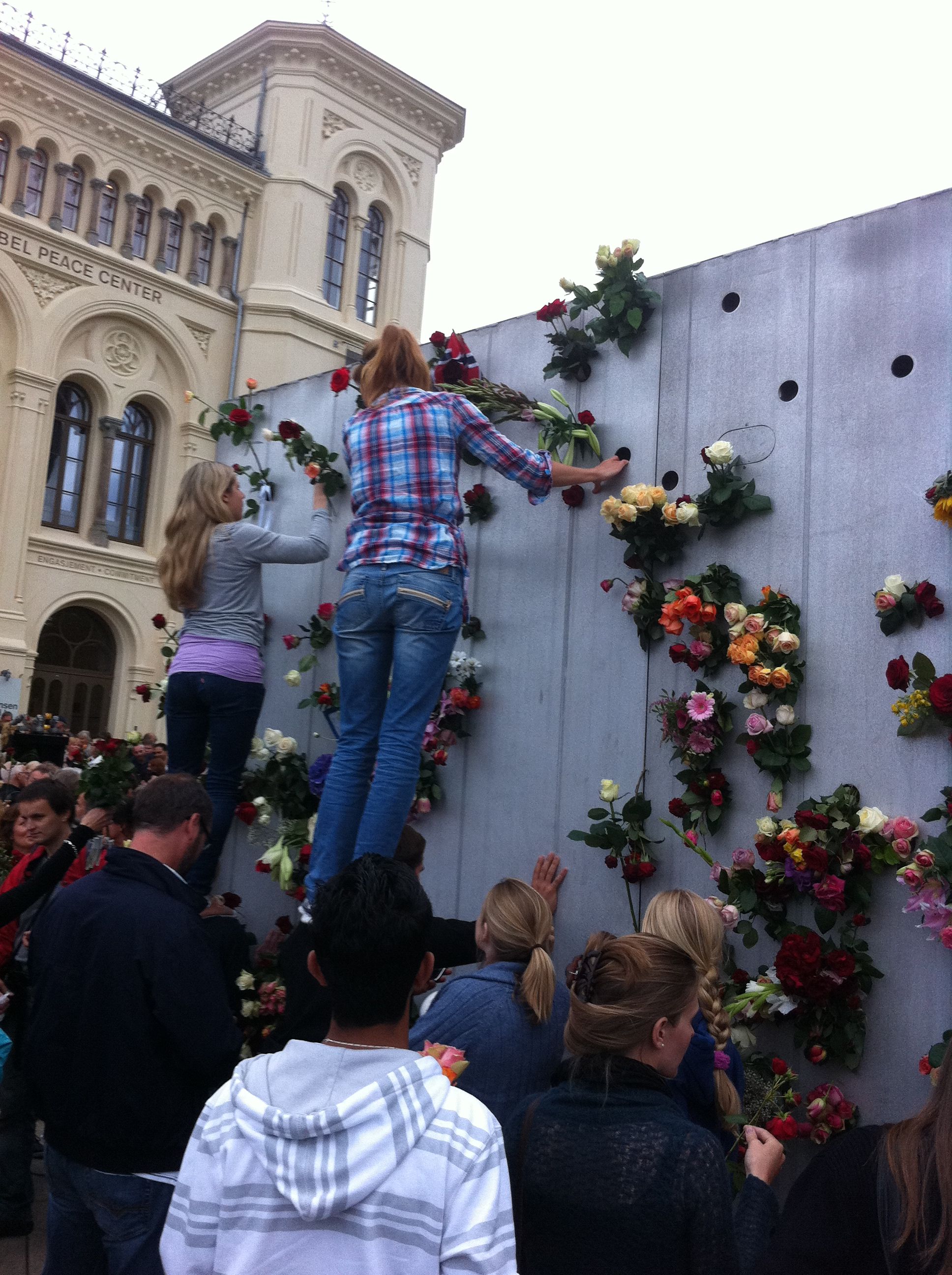Portal to a borderless world
When the Nobel Peace Center opened to the public in June 2005, an eye-catching installation stood in front of the old Vestbanen building. This 11-meter-long and almost seven-meter-deep aluminium portal attracted people from the busy City Hall Square into the Nobel Peace Center. The floor of the portal was lit, and the ceiling and walls were full of small holes. The holes represented the cities of the world, and together they formed a world map without borders.
The World Portal, like the new center itself, was designed by architect David Adjaye. The commission to design the Nobel Peace Center in 2005 was one of the international star architect's first major international assignments. He really wanted the centerto reflect the Nobel Peace Prize's global diversity, and the World Portal was part of his concept for achieving this. As they walked through the portal, visitors should be able to experience a borderless world.
"I wanted to replace the experience of understanding the world as an object which is viewed from above, like a map or a globe, with a spatial experience."
The portal was donated by Hydro and produced by Hydro Aluminum on Karmøy. The material used should actually have been used to make a Greek gunboat. When the boat order was canceled, the material was put to a far more peaceful purpose.
“The World Portal is a symbol of borderless coexistence, at the same time as it is a good example of sustainable production. Sustainability is, like peace, a challenge that must be addressed by the international community together. When we can no longer keep this beautiful portal outside the Nobel Peace Center, it is fitting that it gets a new life in the park at Magnor,"says Nobel Peace Center Executive Director Kjersti Fløgstad.
The World Portal stood on City Hall Square in periods from 2005 to the summer of 2012, when the Municipality of Oslo asked for it to be removed because it created problems for, among other things, snow removal. For many years, the World Portal was a well-known landmark for the people of Oslo. After the terrorist attack on Utøya and the Norwegian government headquarters in 2011, this was one of the places the public visited to show support and solidarity. For a long time after July 22, roses protruded from all the holes in the walls of the portal. When the World Portal was to be transported to Magnor in the spring of 2022, some dried rose petals were still stuck to the walls – a fitting reminder of the strong, symbolic significance of the installation.
Share:
